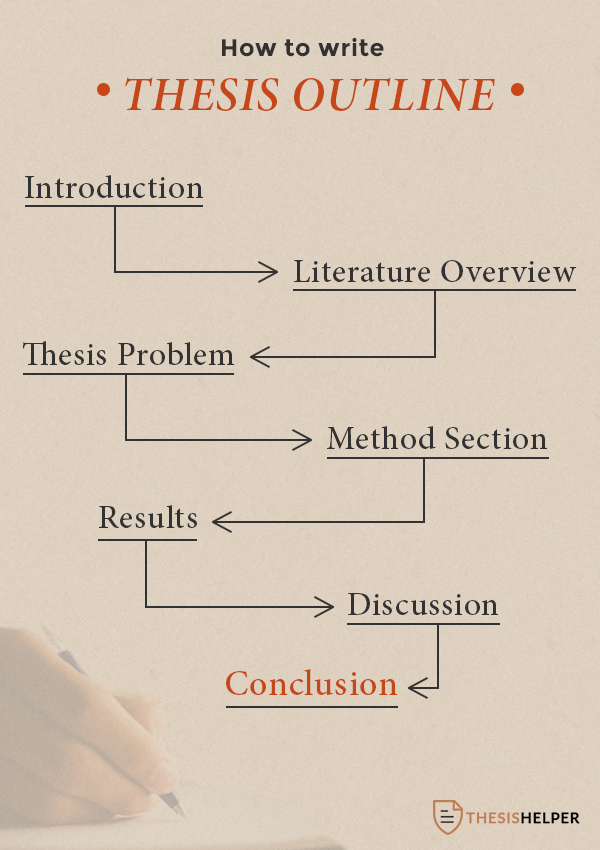
The most important thing to look out for is a weak argument. If the main argument in the thesis is not persuasive, none of the other information will make sense. Try to improve it, and if you still can’t get it right, talk to your supervisor–he or she will give you advice on how to proceed.
As a high school or college student, you definitely have your fair share of assignments. From carrying out backbreaking research on late historical figures to writing endless essays, school work can be a tad draining. However, one assignment that always seems to have students in a fix is the satire essay.
Experience has shown that the biggest problem most students face is procrastination. They can’t get started, and they struggle with the first 30% of the work. The beginning is one of the most problematic stages of the process, and every word seems to come with a big struggle. In this situation, we recommend that you start writing without any specific thoughts or intentions.
Your list should probably look something like this: Title Page, Signature Page, Abstract, Table of Contents, Introduction, Body of Paper (Methods, Results, Discussion), Conclusion, Bibliography, Endnotes.
Redrafting/Editing With a Fresh View

Firstly, until you have actually started researching the subject and getting your information in order, you won’t know whether anyone has investigated this particular aspect of your field before. Furthermore, you may find that a lack of literature forces you to consider an alternative approach. Finally, during the research and writing process, you might find that the thesis question you are contemplating has become uninteresting, irrelevant, or impossible to investigate.
The other option is to make various drafts of whatever thoughts you have on the topic, then structure them into an outline for your thesis. This method is usually used when the student is not exactly sure what he or she will be writing about.
Also, consider your syntax and vocabulary. Don’t flood your text with those complicated academic sentence structures exclusively. Mix them up with concrete and simple statements to emphasize main ideas and arguments.
If it helps, begin writing in an informal or nonacademic style: something like, “I agree with Ms. White’s statement about weapons, but I’ve got questions about her opinions on page 65.” This gives you something to work from, and in the future, this sentence could expand to fill a couple of pages.

The results section is where you will present your observations using tables, graphs, and statistics. Remember to avoid inserting your opinion at this stage – just record all the data extracted from the investigation. To make your master’s thesis more structured, use sub-headings and state the key results at the beginning of each paragraph.
You must have some idea of the question you want to address, but remember to remain flexible and open to new ideas. Once you have begun your research and have a good idea of how your master’s thesis will develop, you can create a thesis question that will provide an original perspective on the body of the paper.
To ensure that your work is logical and meets all the requirements, you need to make an outline for it, which you can do in one of two ways. Your first option is to make a comprehensive draft and then structure your thesis directly from this. This method is suitable for students who are thoroughly familiar with the subject and have the ability to construct the entire complicated master’s thesis in their heads.
This is the most important part of your thesis. State whatever significant patterns, relationships, or trends you discovered during your research (including any exceptions that you noted), then interpret your results. Show multiple hypotheses wherever possible. Explain why these results are important for future investigations in your chosen field.
4. Discussion

At some point in your academic career, your professor will require you to write a thesis paper on a topic of your choice. Most people become lost at this stage, and a lot of questions start flying around in their heads:
Experience has shown that the biggest problem most students face is procrastination. They can’t get started, and they struggle with the first 30% of the work. The beginning is one of the most problematic stages of the process, and every word seems to come with a big struggle. In this situation, we recommend that you start writing without any specific thoughts or intentions.
Remember to check all your university’s requirements regarding the final presentation.

This article collects a list of undergraduate, master’s and PhD theses and dissertations that have won prizes for their high-quality research.
University: London School of Economics
Faculty: International Development
Author: Lajos Kossuth
Award: 2016 Winner of the Prize for Best Overall Performance
Title: Shiny Happy People: A study of the effects income relative to a reference group exerts on life satisfaction
University: University of Edinburgh
Faculty: Informatics
Author: Christopher Sipola
Award: 2018 Social Responsibility & Sustainability Dissertation Prize
Title: Summarizing electricity usage with a neural network
From our own experience, we know how difficult it is to begin writing a thesis, especially if you don’t know where to start. Looking at other theses can give you initial ideas for how to get started and help you work out the best structure for your own research.
Table of contents

University: University of Minnesota
Faculty: Chemical Engineering
Author: Eric A. Vandre
Award: 2014 Andreas Acrivos Dissertation Award in Fluid Dynamics
Title: Onset of Dynamics Wetting Failure: The Mechanics of High-speed Fluid Displacement
University: California Institute of Technology
Faculty: Physics
Author: Michael P. Mendenhall
Award: 2015 Dissertation Award in Nuclear Physics
Title: Measurement of the neutron beta decay asymmetry using ultracold neutrons
University: University of Ottawa
Faculty: Physics
Author: Guillaume Thekkadath
Award: 2017 Commission on Graduate Studies in the Sciences Prize
Title: Joint measurements of complementary properties of quantum systems

Answers the question: What will be your contribution to the current work on solving this issue?
Thesis Problem: Define your intended contribution to solving this problem and make the promise of the thesis.
You can use the template above to save time – but we thought a simple process on how to write a thesis outline and getting started with organizing your material before applying the information to the appropriate section would be equally beneficial.
Unlike the research or term papers, you are experienced with, an academic work of this scope requires a lot more. You shouldn’t be intimidated by this statement, but you should take the time to become familiar with all that is expected that you include and reference. The best place to start is to create a thesis chapters outline touching on all of the major sections. These include a title page, an abstract, an introduction, methods and discussion, conclusions, and a bibliography. Here’s a thesis outline sample you can use for free:
Thesis Outline Template

Introduction answers the question: Which problem area this thesis is about to address?
The thesis statement outline or main outline is an important blueprint used to guide the process of organizing and writing your thesis or dissertation. These works are usually required in pursuit of a master’s or Ph.D. degree in many academic fields. What you choose to do depends on your school’s requirements as well as the type of degree you are seeking to earn.
- Chapter 1: Introduction
- General Introduction of the Research Study
- Research Problem or Questions with Sub-Questions
- Reasons or Needs for the Research Study
- Definition and Explanation of Key Terminology
- Context of Research Study within the Greater Discipline (Area of Study)
- Chapter 2: Hypothesis (Theory)
- Brief Overview of Theoretical Foundations Utilized in the Study
- Brief Overview of Literature Reviewed, Discussed and Applied
- Study Model and Process Aligning with Literature Reviewed
- Hypotheses and Justifications Tied to Prior Sections or Statements
- The Scope of Your Study with Theoretical Assumptions and Limitations
- Chapter 3: Methods
- Introduction and General Description Study Method and Study Design
- In-Depth Description of the Study Design (Study Materials to Be Used)
- Explanation of Sample to Be Used in the Study
- Explanation of Measurements, Definitions, Indexes, etc. and Reliability and Validity of Study Method and Study Design
- Description of Analytical Techniques to Be Applied and Justification for Them
- Reliability and Validity of Internal/External Design and Related Subtypes
- Assumptions of Study Method and Study Design with Implied Limitations
- Chapter 4: Findings
- Brief Overview of Material
- Findings (Results) of the Method of Study and Any Unplanned or Unexpected Situations that Occurred
- Brief Descriptive Analysis
- Reliability and Validity of the Analysis
- Explanation of the Hypothesis and Precise and Exact Data (Do Not Give Your Opinion)
- Chapter 5: Discussion
- Brief Overview of Material
- Full Discussion of Findings (Results) and Implications
- Full Discussion of Research Analysis of Findings
- Full Discussion of Hypothesis and of Findings
- Post Analysis and Implications of Hypothesis and of Findings
- Chapter 6: Conclusion
- Summary of Academic Study
- Reference to Literature Review
- Implications of Academic Study
- Limitations of the Theory or Method of Research
- Recommendations or Suggestions of Future Academic Study
- Chapter 7: Bibliography
- Complete List of all Sources Used Regardless of Citation or Inclusion

The biggest difference between a thesis and a dissertation is that a thesis is based on existing research.
A thesis is also a scholarly piece of writing, but it is for those who are graduating from a master’s program. A thesis allows students to showcase their knowledge and expertise within the subject matter they have been studying.
For students who are seeking their higher education degrees but need a flexible, affordable, and quality alternative to traditional college, take a look at the programs that the University of the People has to offer.
Whether you are currently a prospective student considering earning your higher education degree or a student enrolled in a master’s or doctoral program, you know the benefits of education.
Main Differences Between a Thesis vs. Dissertation

Let’s break down what a dissertation and thesis are so that you have a strong handle on what’s expected. For both a thesis and a dissertation, there is an obvious fluency and understanding of the subject one studies.
- A dissertation is longer than a thesis
- A dissertation requires new research
- A dissertation requires a hypothesis that is then proven
- A thesis chooses a stance on an existing idea and defends it with analysis
- A dissertation has a longer oral presentation component
However, for some, earning a traditional degree on-campus doesn’t make sense. This could be because of the financial challenges, familial obligations, accessibility, or any other number of reasons.

- Chapter 1: Introduction
- General Introduction of the Research Study
- Research Problem or Questions with Sub-Questions
- Reasons or Needs for the Research Study
- Definition and Explanation of Key Terminology
- Context of Research Study within the Greater Discipline (Area of Study)
- Chapter 2: Hypothesis (Theory)
- Brief Overview of Theoretical Foundations Utilized in the Study
- Brief Overview of Literature Reviewed, Discussed and Applied
- Study Model and Process Aligning with Literature Reviewed
- Hypotheses and Justifications Tied to Prior Sections or Statements
- The Scope of Your Study with Theoretical Assumptions and Limitations
- Chapter 3: Methods
- Introduction and General Description Study Method and Study Design
- In-Depth Description of the Study Design (Study Materials to Be Used)
- Explanation of Sample to Be Used in the Study
- Explanation of Measurements, Definitions, Indexes, etc. and Reliability and Validity of Study Method and Study Design
- Description of Analytical Techniques to Be Applied and Justification for Them
- Reliability and Validity of Internal/External Design and Related Subtypes
- Assumptions of Study Method and Study Design with Implied Limitations
- Chapter 4: Findings
- Brief Overview of Material
- Findings (Results) of the Method of Study and Any Unplanned or Unexpected Situations that Occurred
- Brief Descriptive Analysis
- Reliability and Validity of the Analysis
- Explanation of the Hypothesis and Precise and Exact Data (Do Not Give Your Opinion)
- Chapter 5: Discussion
- Brief Overview of Material
- Full Discussion of Findings (Results) and Implications
- Full Discussion of Research Analysis of Findings
- Full Discussion of Hypothesis and of Findings
- Post Analysis and Implications of Hypothesis and of Findings
- Chapter 6: Conclusion
- Summary of Academic Study
- Reference to Literature Review
- Implications of Academic Study
- Limitations of the Theory or Method of Research
- Recommendations or Suggestions of Future Academic Study
- Chapter 7: Bibliography
- Complete List of all Sources Used Regardless of Citation or Inclusion
Conclusion: Summarize your findings and answer the research question.
Your thesis proposal outline is something you need to do before you start your research in earnest. It needs to be approved by your graduate advisor as it will guide your study for the next several months. However, the paradox about creating a proposal outline is that you likely don’t have a well-developed plan and should actually conduct a little background research before trying to put one together. After you receive this approval, you can get to work, and after you’ve accumulated tons of notes including quotations, paraphrases, questions, responses, data, and more, you will be ready to create the thesis outline.
Answers the question: What are the outcomes of this research?
How to Make a Thesis Outline

Unlike the research or term papers, you are experienced with, an academic work of this scope requires a lot more. You shouldn’t be intimidated by this statement, but you should take the time to become familiar with all that is expected that you include and reference. The best place to start is to create a thesis chapters outline touching on all of the major sections. These include a title page, an abstract, an introduction, methods and discussion, conclusions, and a bibliography. Here’s a thesis outline sample you can use for free:
The thesis statement outline or main outline is an important blueprint used to guide the process of organizing and writing your thesis or dissertation. These works are usually required in pursuit of a master’s or Ph.D. degree in many academic fields. What you choose to do depends on your school’s requirements as well as the type of degree you are seeking to earn.
In this article, we provide a standard template for you to use as well as detailed instructions on how to write a thesis outline. There are a number of resources available on the web, but this no-nonsense approach is a great start and provides you with all the information you need.
Answers the question: How did the previous researchers deal with this problem?
